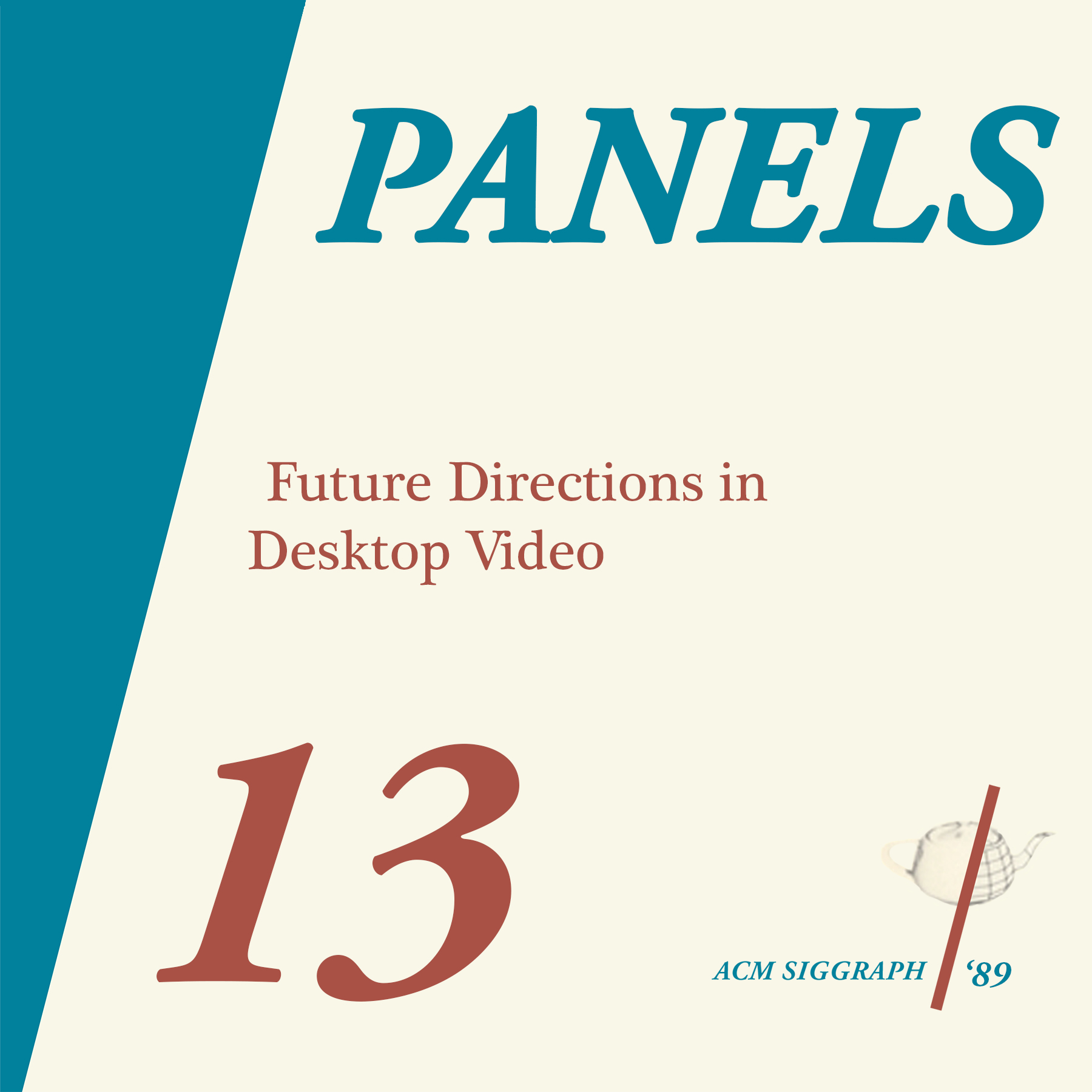“Future Directions in Desktop Video” Moderated by Tim Heidmann
Conference:
Type(s):
Title:
- Future Directions in Desktop Video
Presenter(s)/Author(s):
Moderator(s):
Entry Number: 13
Additional Information:
Transcript of the welcoming speech:
Good morning. My name is Tim Heidmann and I’d like to welcome you all to this panel, which is entitled Future Directions in Desktop Video, and I’d especially like to thank all you people who stayed up a little late on Thursday night to come to this panel. It’s really good to see you all out there.
I’ve gotten word that this panel is being transcribed. They’re putting together a booklet, so they’re taking the slides and the stills from the videos and all the things that we’re saying. So I’d just like to take this opportunity to say hi to the person who’s transcribing this and sorry you couldn’t be here today, and I wanted to let you know that the word of the day is Neopraseodymium, and I hope you’ve got your scientific dictionary close by.
When we first started putting this panel together, I talked to my friends who were involved in a number of different areas in video, and the question that came to the forefront very quickly is what exactly desktop video is. There’s been a lot of talk about it, a lot of magazine articles. It’s a good buzz word. But we all felt it incorporated a whole bunch of different areas that weren’t easily put into one category.
We did agree that the name of desktop video came from the field of desktop publishing. In desktop publishing, which has been a rapidly growing field in the past few years, the whole point is that we’ve got a computer bringing together elements from the outside world, creating elements inside the computer, putting them all together and coming up with a final product. The point is it’s all done inside the computer. Again, it does the things that computers do really well — like text editing and graphics design and layout. And it was made possible by the fact that these high quality printers — laser printers — had come out that you could produce a very high quality output from it.
Well, on the video side, there is a similar development. That is, it’s possible now to make video animation completely within the computer. There are software packages for modeling objects, for creating animation, for rendering very high quality images and outputting them directly to tape. And I guess you could call that desktop video. You’re doing the same thing as you’re doing in desktop publishing, but now you’re producing videotape and animation.
But really what’s happening in video is a lot bigger than that. I’ve kind of come up with this map. If you look at the entire video process, you can split it into four parts. The first being creating the elements, which I’ve called Source here. Now that would include such applications as computer graphics, generated completely inside the computer, but also things like pointing a camera at someone or something, things like medical imaging. Basically the creation of the images.
The second step would be assembling those images and probably some audio into a master video production. Just about everything you do in video involves some sort editing to it, even if it’s just putting a title on the beginning.
The third area is the distribution. How do these images get out to the outside world? A lot of times it’s just making lots of VHS copies and mailing them to your friends.
And the final part is how do you look at this videotape? How do you use video in your application?
What we’re going to talk about today, when we talk about desktop video, is actually all these areas. The speakers today have a number of different backgrounds. We’ll be addressing this in a number of different ways.
Basically the reason we’re doing this panel today and why it’s important now is because there are a lot of developments that are bringing video into the reach of more application areas. People are interested in what can be done with video, want to know what’s happening and what the developments are. Specifically the things that we’re seeing are the appearance of higher quality consumer formats. That is, videotape recorders, players, that are available at consumer affordable prices, but give you enough quality to let you duplicate and edit a little better than VHS or just plain 8 millimeter.
Computer graphics hardware and software is becoming less expensive and more accessible. The fact that you can buy editing equipment for these new consumer formats and do a really good job of putting together a final videotape without going to a postproduction house. New distribution methods and integrated video applications like DVI, which allow much broader use of video. So there’s more incentive to produce these things.
These are the areas we’re going to be talking about today, and just keep in mind this map, and I think if we can reference the different things we’ll be talking about to this map, maybe it will all make sense.
I’d like to introduce the first speaker today who is Michael MacKay, currently of the Sony Advanced Video Technology Center, formerly of Diaquest; before that with Atari Research. Michael brings a strong background in computer graphics, in video production, interactive video applications, and without further adieu, Michael.





